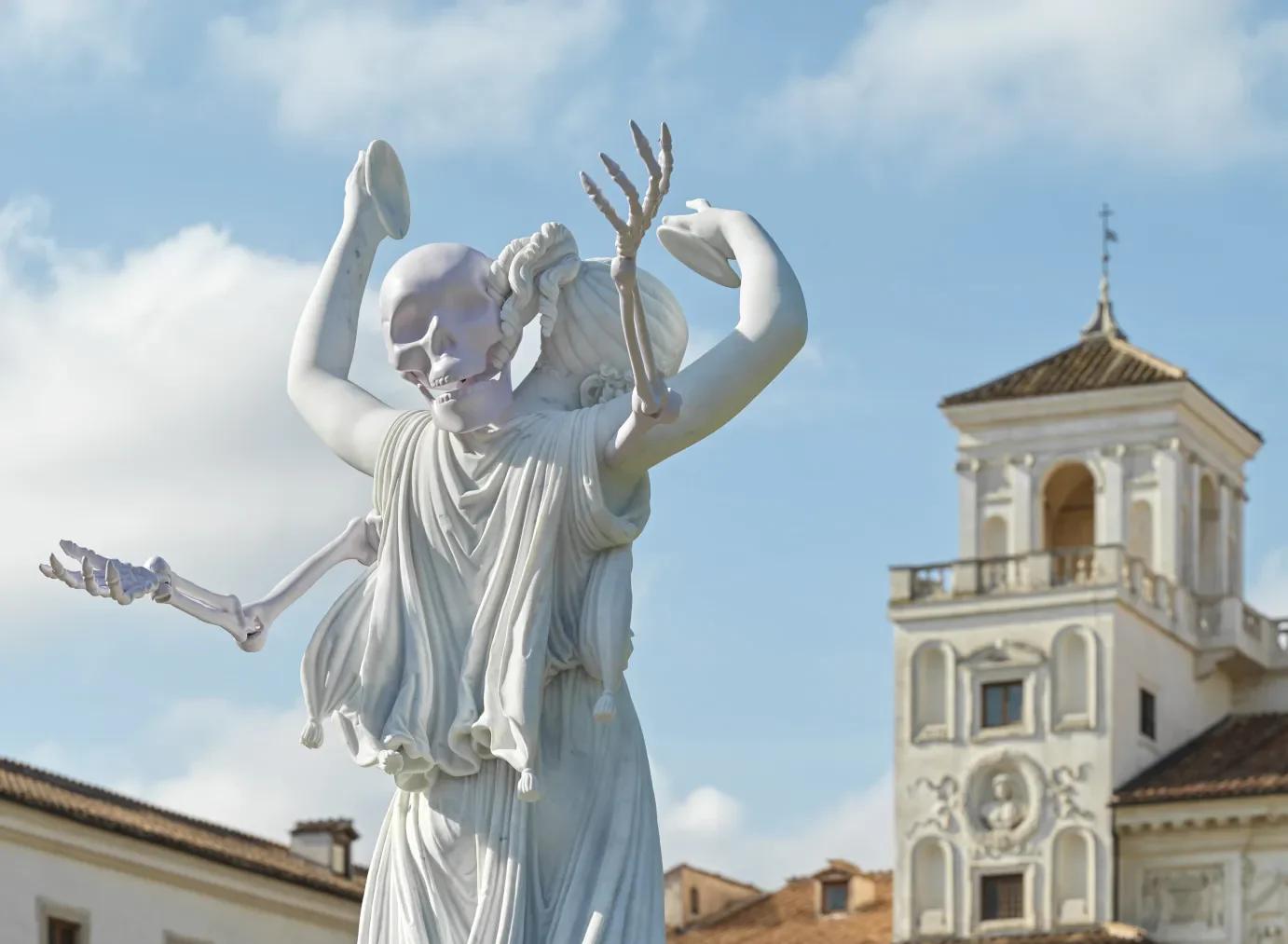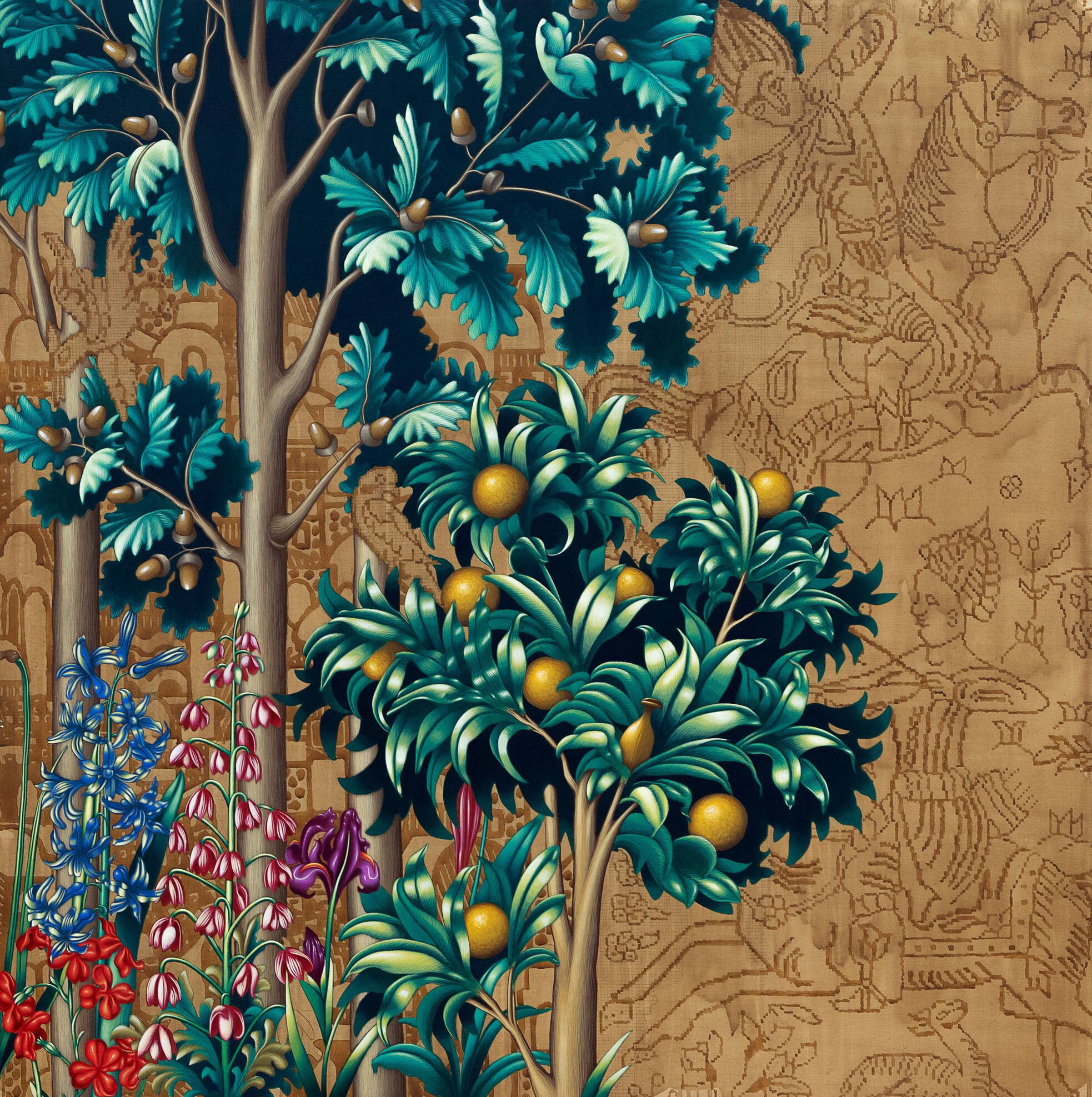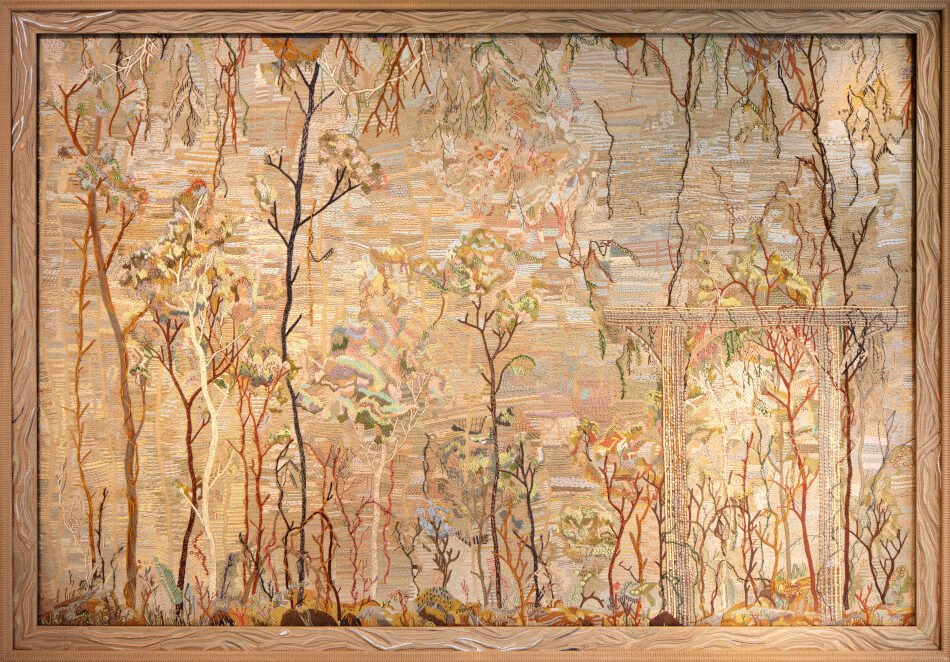Search
White Night
2022
17.11.2022
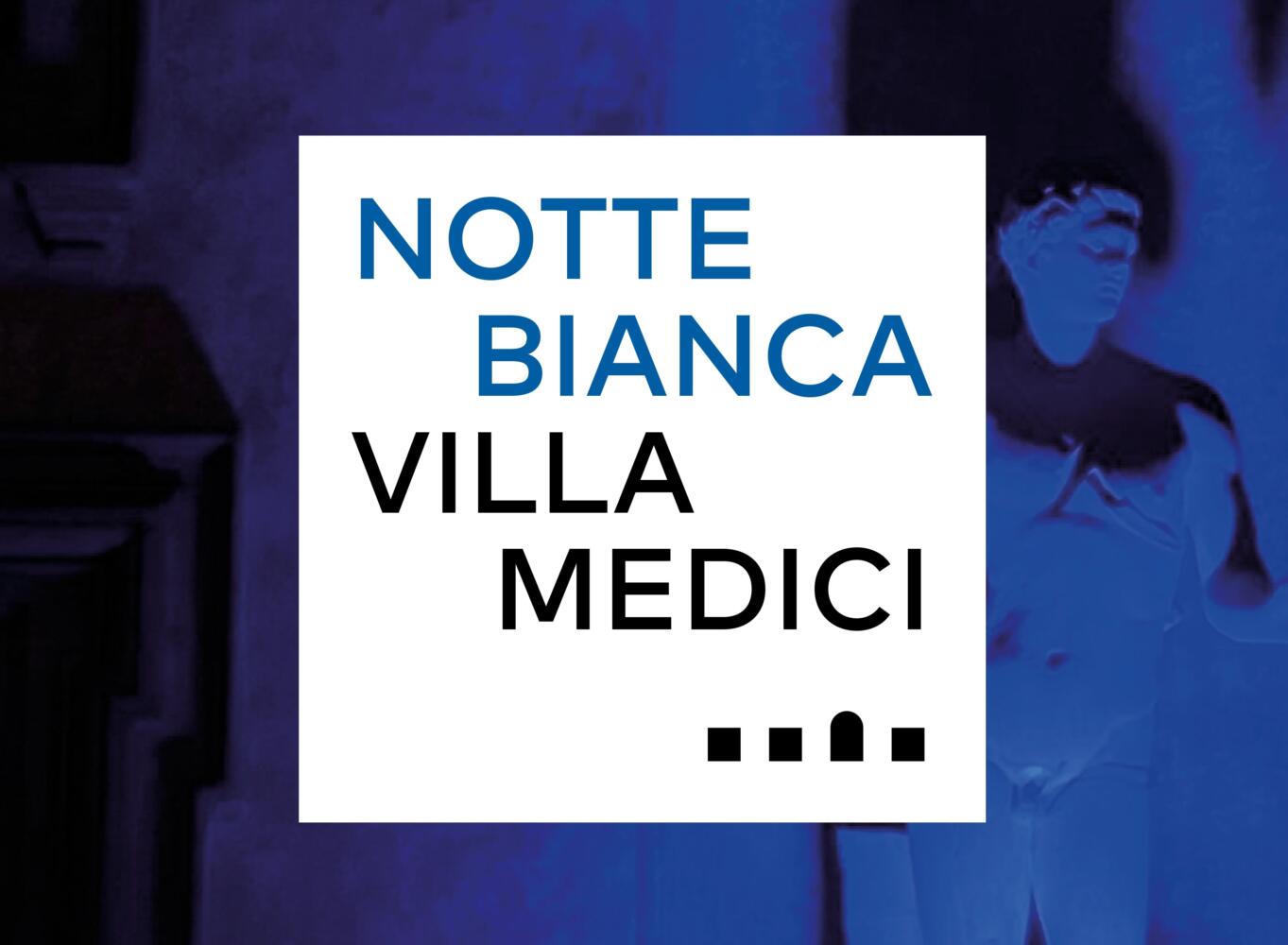
- Curator
- Saverio Verini
With the participation of : Marta Badalamenti, Eleonora Claps, Sokhema di Croce, Pablo Cuevas, Berardo di Mattia, Azzurra Fiume, Cecilia Michieletto, Greta Michieletto, Dayo Ninja, Rigs Ninja, Rio Ninja, Jewel Ninja, Clyde Ninja, Angelica Simeoni.
After a 2021 edition that drew almost 5,000 visitors, Nuit Blanche returns to Villa Medici on Thursday, November 17, to showcase the work of sixteen fellows, one resident and one guest artist from the Académie de France in Rome. From the visual arts to stage direction, art history, cinema, musical composition, literature and choreography, dialogue between artistic practices is at the heart of this highlight of the cultural season.
An event dedicated to contemporary creation, the Nuit Blanche invites visitors to stroll through the gardens and historic spaces of Villa Medici, some of which are exceptionally open to the public. Many of the artistic proposals are closely linked to the history and architecture of Villa Medici, encouraging dialogue between heritage and contemporary creation.
The tour is an opportunity for the Roman public to meet the fellows, who began their year-long creative and experimental residency at Villa Medici in September 2022.
The Nuit Blanche showcases a sample of their multi-faceted research – plastic works, installations, sound productions – and provides a space for the long-term development of their residency projects, with the support of curator Saverio Verini.
With its poetic and political dimensions, Nuit Blanche 2022 also features video projections and live performances, in keeping with the ephemeral and vibrant nature of the event.
Francesco Armitti
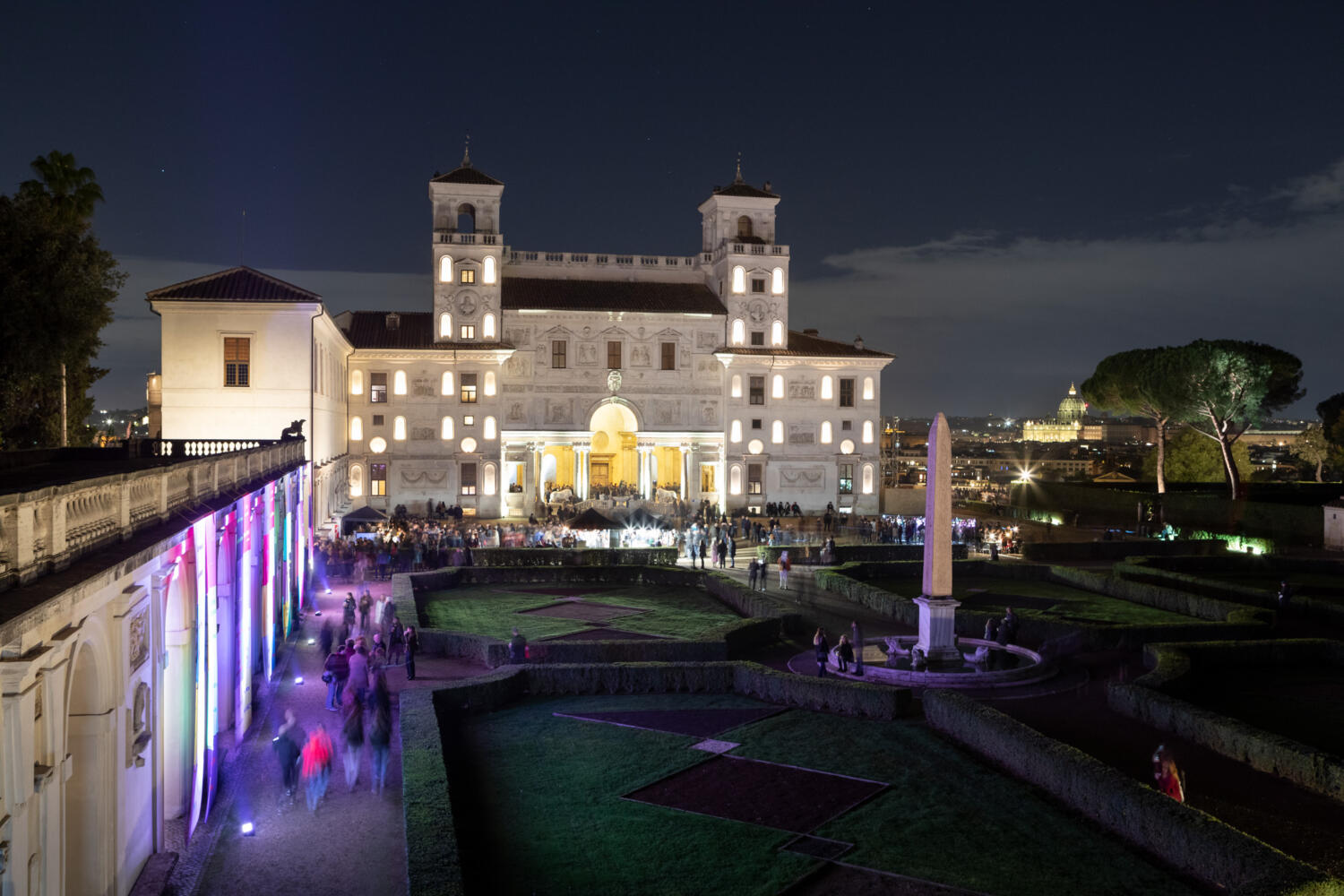
Program
The artists
Residents 2022-2023:
Samir Amarouch, Mounir Ayache, Yasmina Benabderrahmane, Hortense de Corneillan, Lorraine de Sagazan, Dorothée Dupuis, François Durif, Sivan Eldar, Marion Grébert, Bocar Niang, Lasseindra Ninja, Liv Schulman, Anna Solal, Sarah Vanuxem, Ariane Varela Braga, Laura Vazquez.
→ Click to discover their biographies and residency projects
The resident winner of the Occitanie-Médicis 2022 Prize Naomi Maurywinner of the Culinary Residence Zuri Camille de Souza and guest artists Mónica Mayer and Fabiola Torres-Alzaga.
With the participation of : Marta Badalamenti, Eleonora Claps, Sokhema di Croce, Pablo Cuevas, Berardo di Mattia, Azzurra Fiume, Cecilia Michieletto, Greta Michieletto, Dayo Ninja, Rigs Ninja, Rio Ninja, Jewel Ninja, Clyde Ninja, Angelica Simeoni
Daniele Molajoli
The commissioner
Saverio Verini is curator of Nuit Blanche. Nuit Blanche is the first stage of a year-long program during which Saverio Verini will work alongside the Villa Medici residents until their end-of-year event in summer 2023.
Curator of contemporary art exhibitions and events, Saverio Verini collaborates with numerous institutions such as the Galleria Nazionale d’Arte Moderna e Contemporanea, the Istituto Italiano di Cultura di Parigi, the Centro per l’arte contemporanea Luigi Pecci, MACRO, the American Academy in Rome, the Civitella Ranieri Foundation and the ArtVerona fair. He currently coordinates exhibitions at the Memmo Foundation in Rome. A contributor to Artribune magazine, he is also the author of several critical texts.
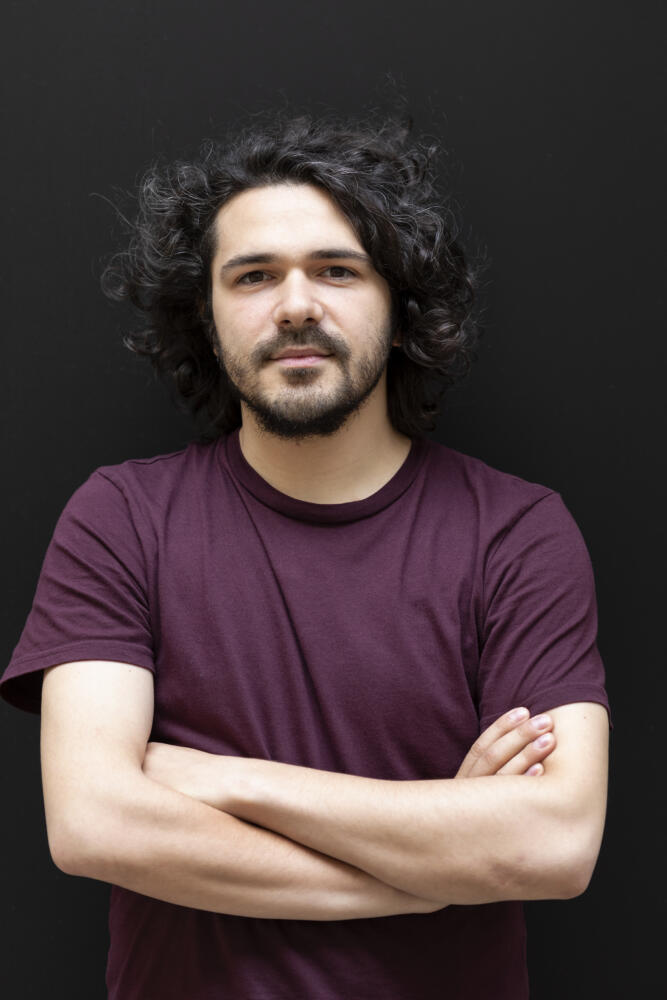
Daniele Molajoli
The Académie de France à Rome - Villa Médicis would like to thank its sponsors and partners:
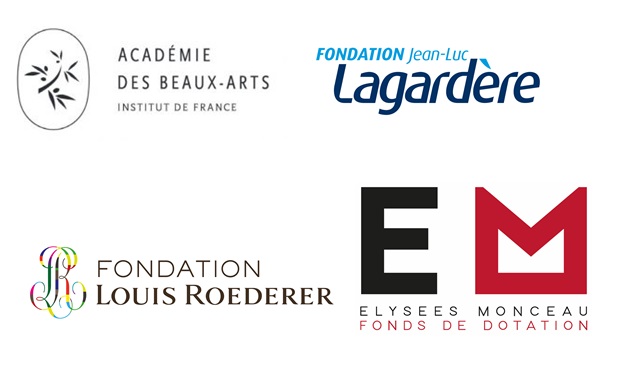
Practical information
Installations, projections, performances
Thursday, November 17, 2022
6pm – midnight
Free admission, booking essential
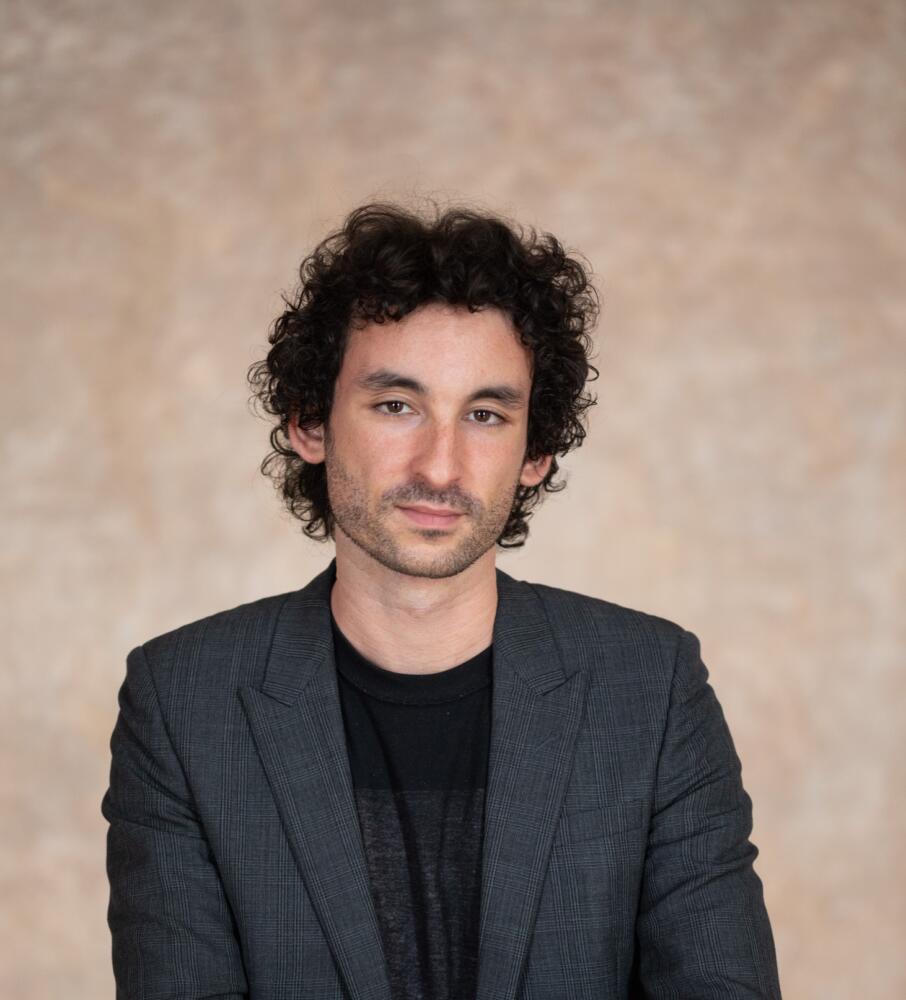
Samir Amarouch
Born in France in 1991, Samir Amarouch is a composer and guitarist. He studied guitar at the Conservatoire de Boulogne-Billancourt and musicology at the Sorbonne. In 2015, he was admitted to the Paris Conservatoire National Supérieur de Musique et de Danse. The transposition of sounds from natural, urban and technological environments is one of the major sources of his compositional work. Inspired by structuralist, minimalist and spectral currents, as well as traditional oriental and electronic music, his latest works focus on the perception of time and rhythm, and on the ambiguity between timbre and harmony. Winner of several international prizes, including the Ernst Von Siemens Foundation Composition Prize in 2020, his music has been performed by the Orchestre Philharmonique de Radio...
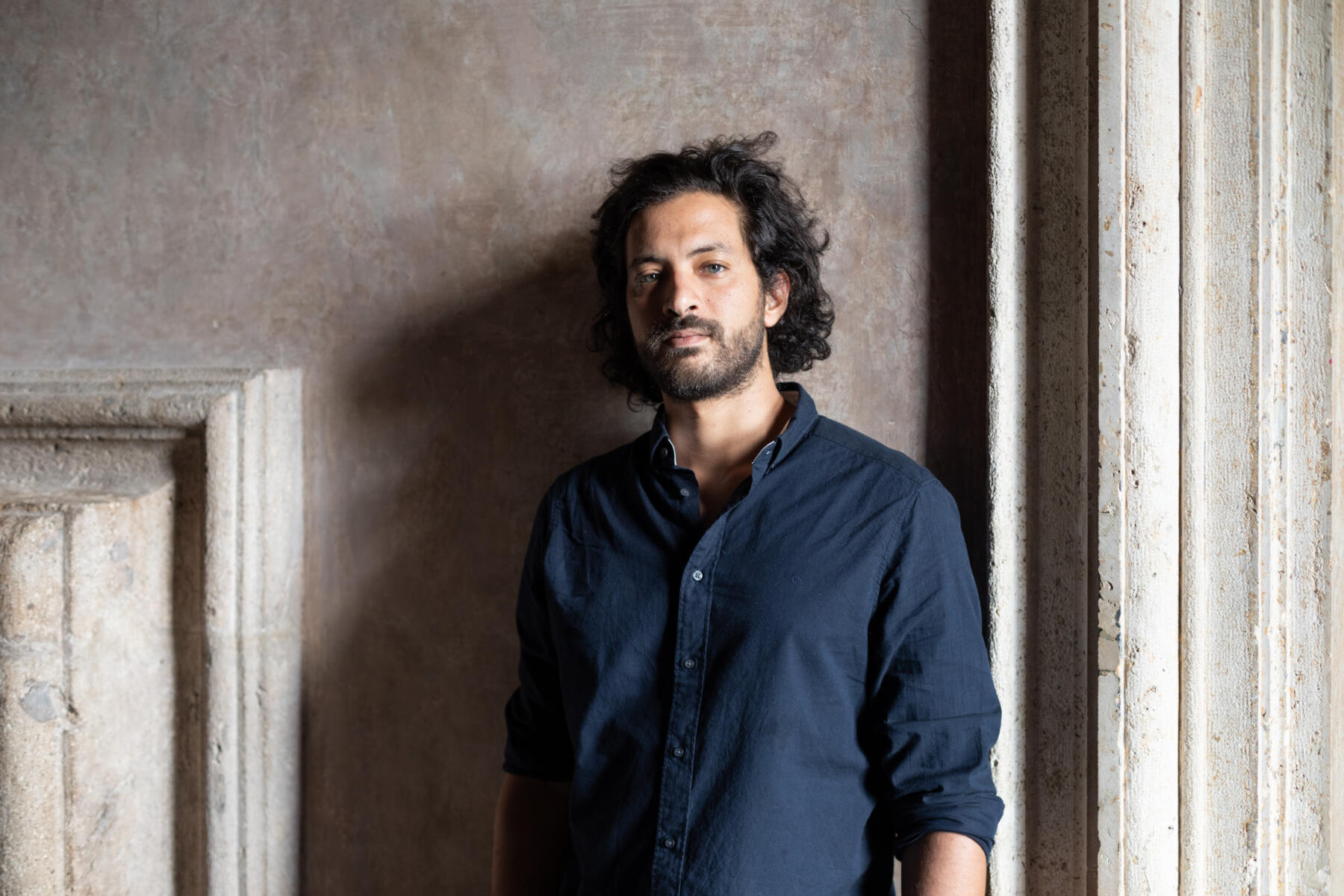
Mounir Ayache
Born in 1991, French-Moroccan artist Mounir Ayache’s technological creations invite us to take a fresh look at the political and social realities of the Arab world. Using the codes of science fiction to blend family histories and the imaginary reappropriation of Arab experiences and identities, he is part of the unofficial current of Arabfuturism, influenced by the Afrofuturism of the 1990s, which draws on fiction to propose alternative narratives. Mounir Ayache apes representations of the Other and the Stranger in Western fiction, and uses new technologies to realize and transmit his ideas, blurring the boundaries between contemporary art and entertainment.
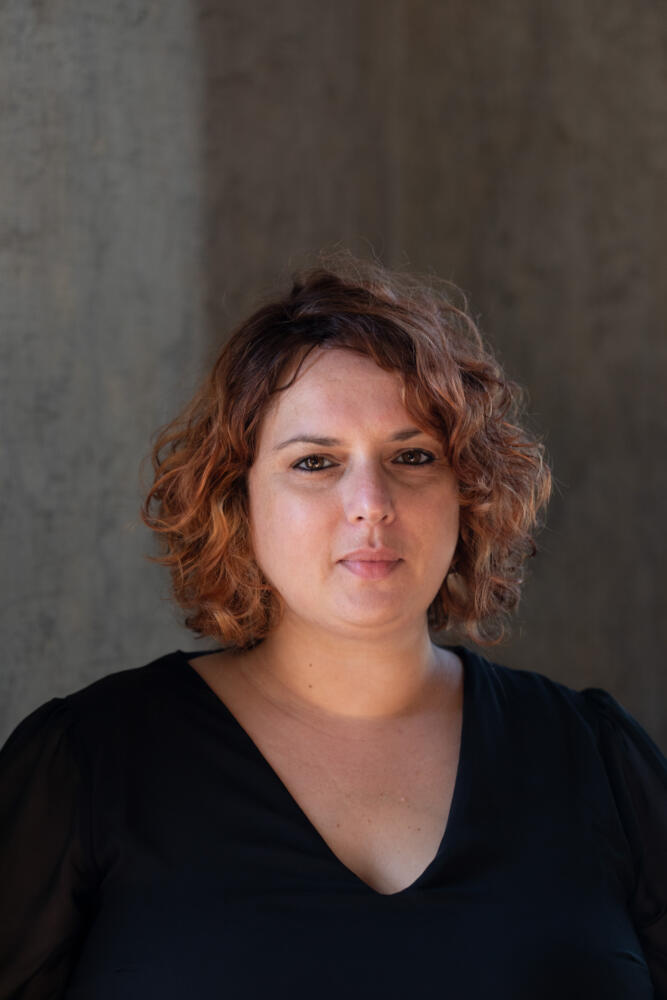
Yasmina Benabderrahmane
Yasmina Benabderrahmane graduated from the École nationale supérieure des beaux-arts de Paris in 2009 and from Le Fresnoy – Studio national des arts contemporains de Tourcoing in 2015. She works experimentally with film and silver photography. Her instinctive artistic practice lies halfway between documentary and filmed diary, and mainly takes the form of multimedia installations. She collects and probes the visible world and the people she loves and who surround her. Her work has been shown in numerous international exhibitions and is part of both private and public collections. In 2018, she received the Solveig-Anspach Prize and was named Révélation Photographie – Laureate of the Prix LE BAL de la Jeune Création 2019 with ADAGP.
In 2021, she won the national photographic...
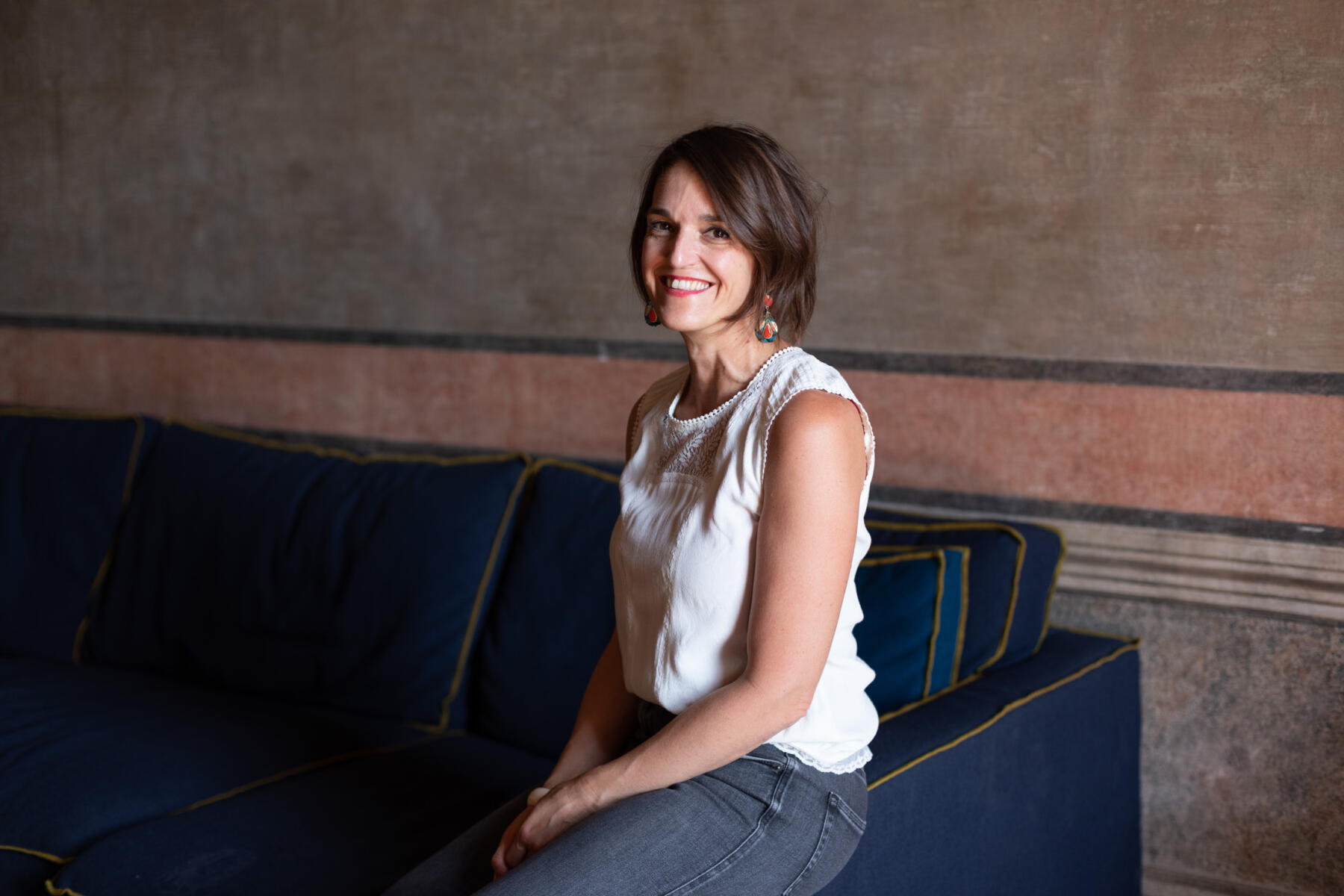
Hortense de Corneillan
Born in Paris in 1980, Hortense de Corneillan is a heritage restorer specializing in ceramics and glass. With degrees in art history, museology (École du Louvre) and conservation-restoration (Institut national du patrimoine), she has been living in Switzerland since 2008. After 11 years working for a museum, she is now a freelance artist. She works for Swiss and European institutions in the fields of archaeology and decorative arts. An important part of her activity is devoted to teaching. She is a lecturer at the Haute École Arc Conservation-restoration (HE-Arc CR, Neuchâtel), where she also coordinates continuing education for conservation professionals.
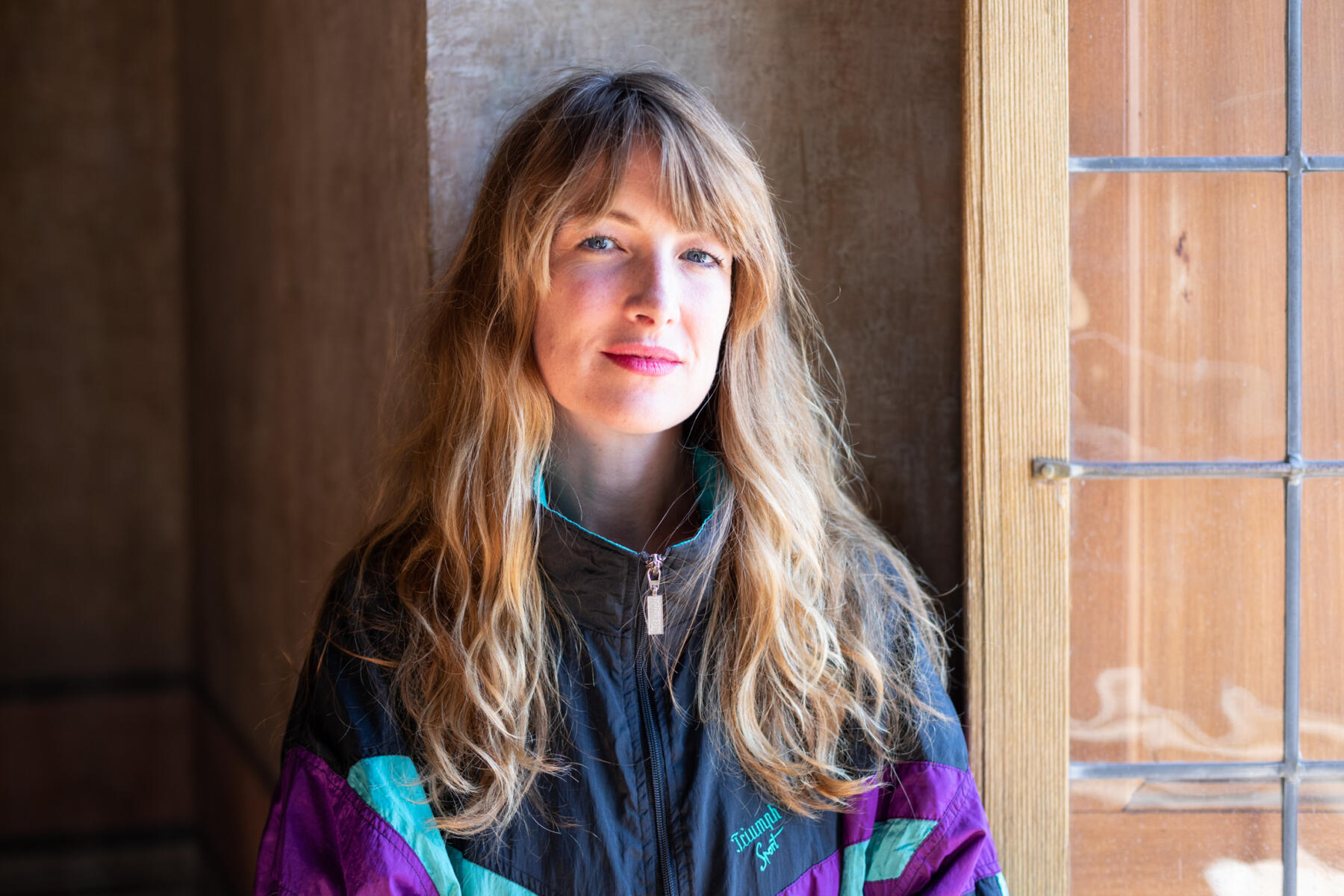
Lorraine de Sagazan
Alongside her training as an actress, Lorraine de Sagazan studied philosophy. In order to train as a director, she left for Berlin in 2014 to assist Thomas Ostermeier. On her return, she worked on adaptations of repertory texts: Lars Noren’s Demons, Henrik Ibsen’s A Doll’s House and Anton Chekhov’s L’Absence de père, presented at the Nuits de Fourvière, Centquatre and MC93, among others.
In 2020, she began a new cycle of work questioning how fiction can respond to reality. This research gave rise to her first two shows, La Vie invisible and Un sacre, created at the Théâtre de la Ville in Paris and at the Théâtre Gérard Philipe in Saint-Denis, where she is associate artist. Her multi-faceted projects, at the crossroads of performance, the performing arts...
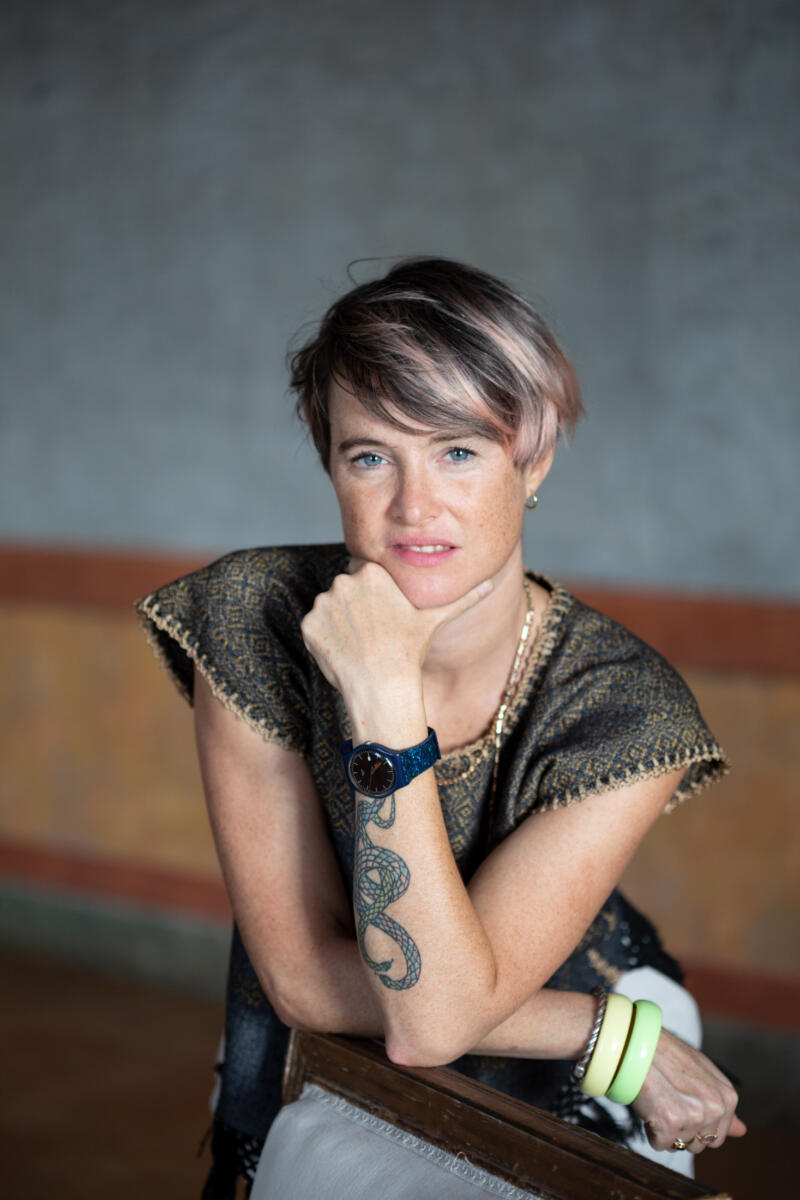
Dorothée Dupuis
Born in Paris in 1980, Dorothée Dupuis is a curator, art critic and publisher of contemporary art. Her practice focuses on the intersection between art and politics, seen from transfeminist, post-Marxist, decolonial and anti-racist perspectives. Since 2013, she has been the director and founder of Terremoto magazine and Temblores Publicaciones publishing house, based in Mexico City. Before moving to Mexico in 2012, she was director of the Triangle-Astérides contemporary art and residency center in Marseille from 2007 to 2012, and assistant curator at the Centre Pompidou from 2005 to 2007. Since 2012, Dorothée Dupuis has worked as an independent curator, writing about the art of the Americas for Terremoto and international publications.

François Durif
Born in Clermont-Ferrand in 1968, François Durif is a writer and artist. A graduate of the École nationale supérieure des beaux-arts de Paris, his work constantly questions the status of the contemporary artist and his prerogatives. In his first exhibitions, he alternated between interior decorator and plasterer-painter, developing an art of discretion. Each time, he takes a long-term approach, recording his actions in situ and producing a text documenting his progress. Following a skills assessment, he left the art world to become a funeral assistant and master of ceremonies at the Parisian undertaker L’Autre Rive (2005-2008). Twelve years later, he looks back on this singular experience in his first story, Vide sanitaire, published by Verticales in October 2021. He addresses the...
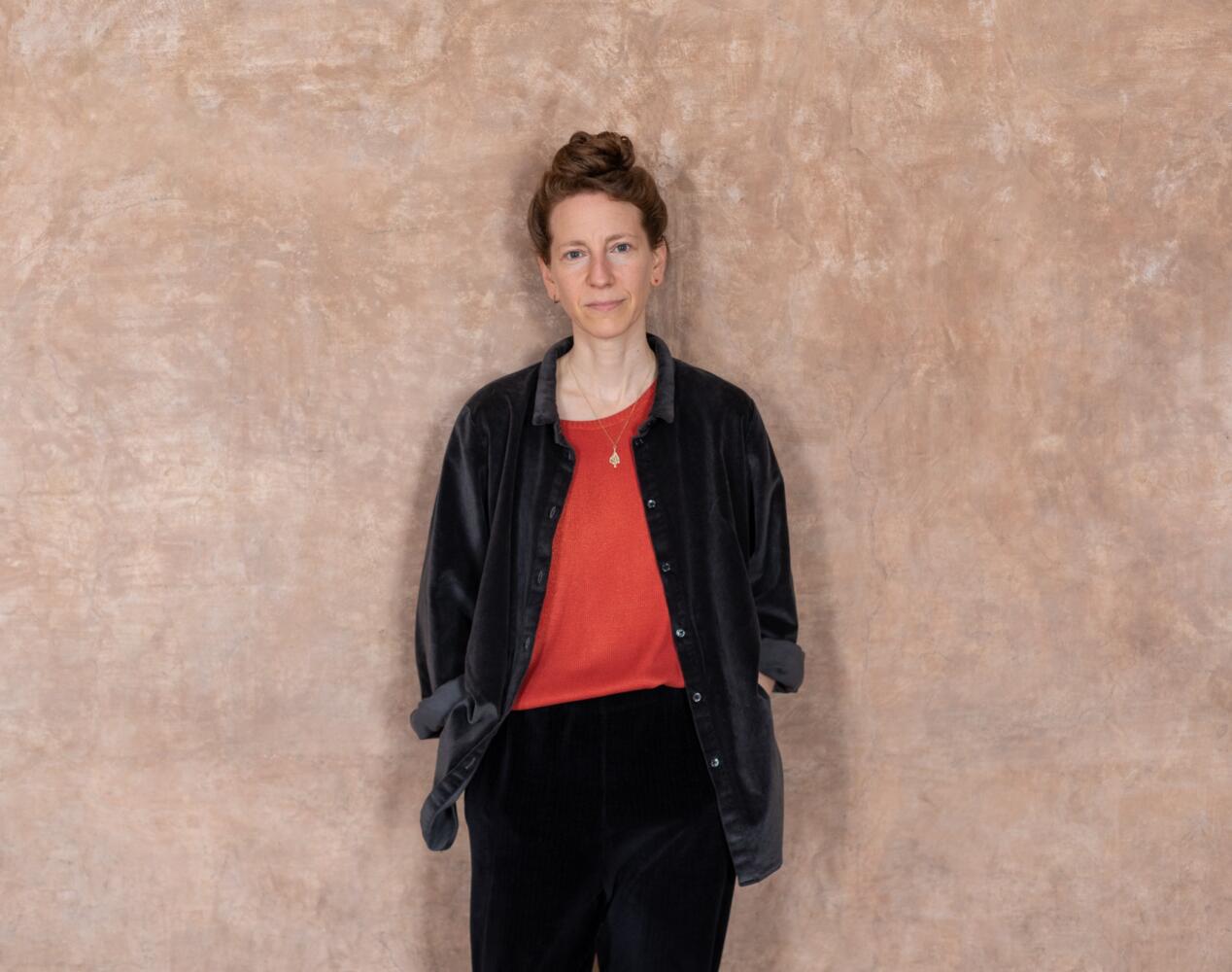
Sivan Eldar
Born in Tel Aviv in 1985, composer Sivan Eldar holds a PhD in composition from UC Berkeley, before joining IRCAM in Paris to follow the Cursus de composition et d’informatique musicale (2017). His music, published by Éditions Durand, has been described as “meditative and captivating” (L’Humanité), “of great refinement” (ResMusica) and “with a unique sensitivity to dramaturgy” (Diapason). Her most recent creations include Like Flesh (Operas Lille, Montpellier, Lorraine, Antwerp), After Arethusa (Venice Biennale, Louvre Auditorium), Una Mujer Derramada (Théâtre du Châtelet), Heave (Centre Pompidou, Opéra de Marseille, November Musique) and Solicitations (Philharmonie Luxembourg, Ultraschall Berlin, Festival Présences, Wien Modern). She...

Marion Grébert
Marion Grébert is an alumna of the École normale supérieure de Lyon, from the arts department and the comparative literature section. After earning a doctorate in art history, she published her first essay in October 2022, Crossing the invisible. Figurative enigmas by Francesca Woodman and Vivian Maier published by Atelier contemporain in Strasbourg. The book was awarded the Prix André Malraux 2022. Her career is characterized by a combination of academic, theoretical and practical training. Throughout her thesis, from 2014 to 2019, she gained a number of professional experiences (lecturer in art history at Paris-IV-Sorbonne Universités from 2014 to 2017, intern-assistant in photographic conservation at the Musée d’Orsay in 2014 and at MoMA in New York in 2017). Once she has...

Bocar Niang
Bocar Niang was born into a griot family on June 8, 1987 in Tambacounda, Senegal. He holds a Master’s degree in arts and culture from the Université Cheikh Anta Diop de Dakar and the École nationale supérieure d’arts de Paris-Cergy. He is currently developing a thesis on research and artistic creation within the RADIAN doctoral program. Founder of the Musée griot in Senegal and its branches in France, he has also been artistic director of the Tamba Jeunes Talents Festival in Senegal since 2008, and of the Nekkalante Festival in France since 2018. His multidisciplinary work combines orality, installation, writing, sculpture, film, video and music. It has been presented at the Centre Pompidou, Palais de Tokyo, Fondation Ricard, Dakar Biennale, Cenon Biennale, Ygrec-Ensapc,...

Lasseindra Ninja
Lasseindra Ninja has been a Paris-based dancer and choreographer for over ten years. Trained in France and the United States, she has developed her artistic practice through the organization of major balls, choreographic creations and solo and collaborative performances. In her work, she is interested in the identities and spaces that exist between the real and the virtual, from the stage to the screen and vice versa: when and under what conditions can movement be performed, and how is it perceived and judged. Her work is based on pan-African and transatlantic vectors within a contemporary reflection on the history of bodies, and the traces and reminiscences of collective dance experiences. A pioneer of the Ballroom Scene in Europe, she founded the Eurasian chapter of the International...

Liv Schulman
Born in 1985, Liv Schulman grew up in Buenos Aires, where she attended public school. Fascinated by television, the arrival of cable in 1990 and the financial crash of 2001 are among the most significant moments in her life. A graduate of the École nationale supérieure d’arts de Paris-Cergy, she has lived in France since 2015. Liv Schulman’s work takes the form of filmed fictions, TV series, readings-performances and novel writing. The discourses at the heart of her work deal with the place of subjectivity in the political space and the difficulty of giving it credence. For example, she shows a real telenovela on television as if it were a museum. In her approach, to create means to directly experience an environment, a system, a subject. Her work has been exhibited at the...

Anna Solal
Anna Solal was born in Dreux in 1988. She lives and works in Paris. She belongs to a new generation of artists distinguished by a predilection for the “handmade”, for the non-hierarchical cross-fertilization of processes borrowed from art and craft. Her assemblages are made from discarded objects gleaned from her wanderings. They are recomposed into aerial motifs, like birds or kites. Brutally figurative, this pop iconography, anxious and moving, highlights the isolation of the individual and a form of abstraction in which he or she navigates. Anna Solal has exhibited at the Palais de Tokyo (Paris), the CAC Passerelle in Brest, the Musée des abattoirs in Toulouse, and Interstate Projects (New York).
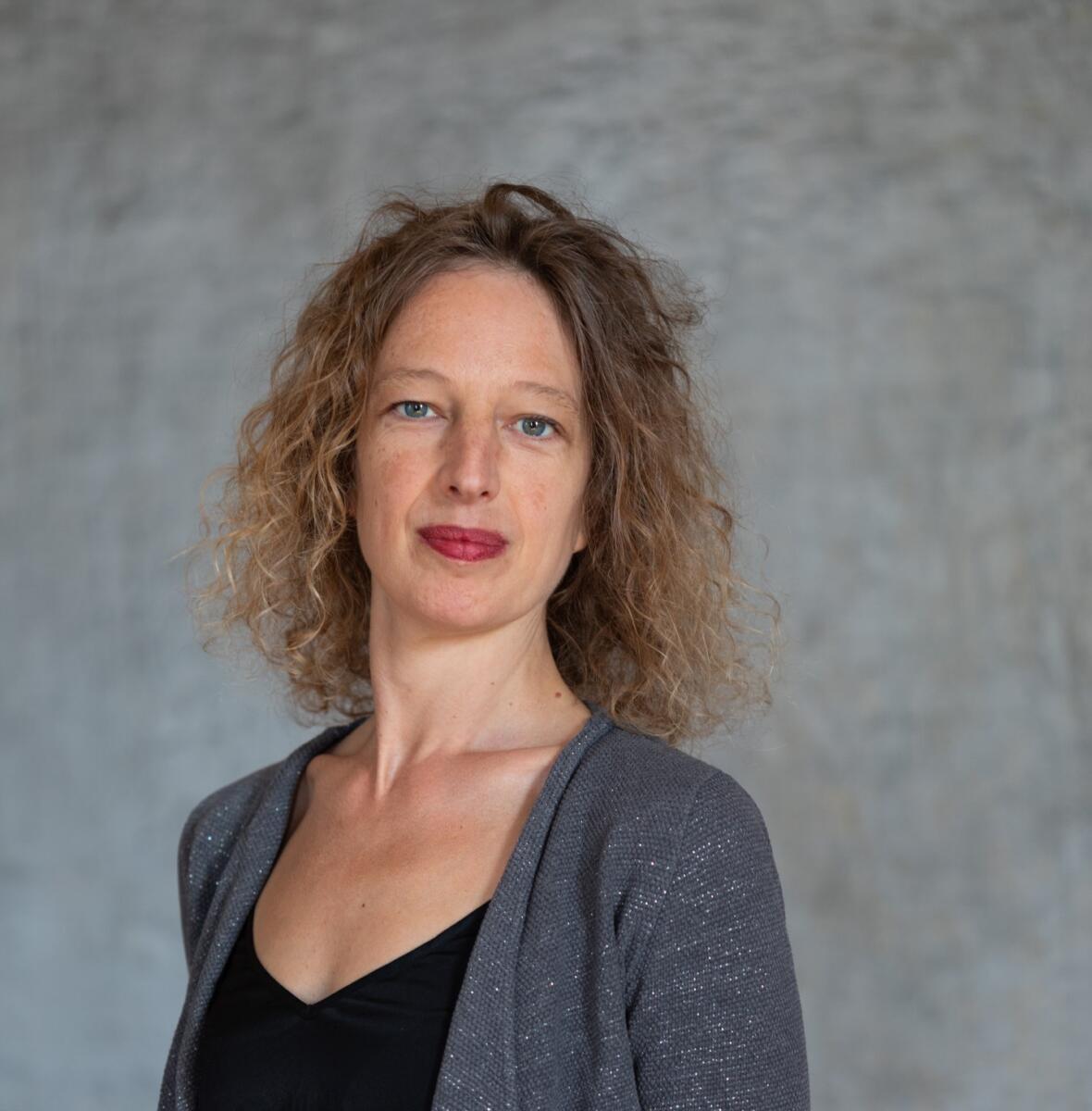
Sarah Vanuxem
After studying law and philosophy at the Université Paris 1 Panthéon-Sorbonne and the École des Hautes Études en Sciences Sociales, Sarah Vanuxem defended a thesis entitled Des choses saisies par la propriété (preface by Th. Revet, Institut de Recherches Juridiques de la Sorbonne, 2012). A lecturer at the Université Côte d’Azur Law School since 2012, her research lies at the crossroads of property law and environmental law, with forays into environmental philosophy, anthropology of nature and legal history. She has co-edited, with C. Guibet-Lafaye, the book Repenser la propriété, un essai de politique écologique (Presses Universitaires d’Aix-Marseille, 2015), written various articles and is, notably, the author of two essays: La propriété de la terre (Wildproject, 2018) and Des...

Ariane Varela Braga
Ariane Varela Braga is an art and architecture historian. She has taught at the Universities of Zurich (2014-2019), where she is preparing her habilitation thesis, and Geneva (2019-2020), and as a visiting professor at the University of Milan (2022). Her research has been supported by the Max Planck Institute for the History of Art-Bibliotheca Hertziana, the Swiss National Science Foundation and the Fondation Gandur pour l’art. In 2021, she was awarded an André Chastel Fellowship from the Villa Médicis and the Institut national d’histoire de l’art. A former member of the Swiss Institute of Rome, she is a research associate at HISTARA/EPHE and co-founder and coordinator of NeReMa-International network for research on marble and decorative stones. Her research lies at the...

Laura Vazquez
Laura Vazquez is a writer. She has published several books of poetry with various publishers, including La main de la main (Prix de la Vocation) with éditions Cheyne in 2014, and Vous êtes de moins en moins réels with éditions Points in 2022. His first novel, La semaine perpétuelle, was published by Sous-sol in 2021. It won the Prix Wepler special mention and the Prix de la page 111. Her epic, Le livre du large et du long, was published in March 2023 by Editions du Sous-sol. She was a resident at the Villa Medici in 2022-2023 and was awarded the Prix Goncourt for Poetry in 2023. In August 2025, during the literary rentrée, Laura Vazquez will publish her second novel, titled Les forces, with Editions du Sous-sol.
Her texts have been translated into Chinese, English, Spanish, Portuguese,...

Zuri Camille de Souza
The Académie de France à Rome – Villa Médicis is launching a residency for culinary experimentation and creation in January 2022. The culinary residency is part of a new program at the Académie de France in Rome, which, for the first time since its creation, is inviting a chef to occupy its kitchens for the duration of his or her residency. The residency will focus on the challenges of sustainable development in the restaurant industry, raising awareness of ecogastronomy and alternative consumption, zero waste and food know-how. In this context, the chef is invited to develop a culinary project for the duration of his or her residency: menu design for the cafeteria of the Académie de France à Rome – Villa Médicis, workshops with artists, creators and researchers hosted by the...

Naomi Maury
Naomi Maury was born in Bédarieux in 1991. She studied at the Ecole Supérieure d’Art d’Annecy Alpes and then had a studio at ADERA Décines in Lyon. In 2019, she will be in residence in Thailand with the support of the Institut Français and the French Embassy. She then exhibited for the Lyon Biennial at the Institut d’art contemporain de Villeurbanne. At the end of 2020, she is in residence in Iceland thanks to the Artists in Residence program, the French Embassy in Iceland and Nylo Museum. Following this residency, she exhibited at L’Assaut de la menuiserie (Saint-Etienne) for her first solo show. She was recently awarded the “Amis du musée des Abattoirs” prize in Toulouse, where she exhibited a performance-activated environment. In 2022, she is in...
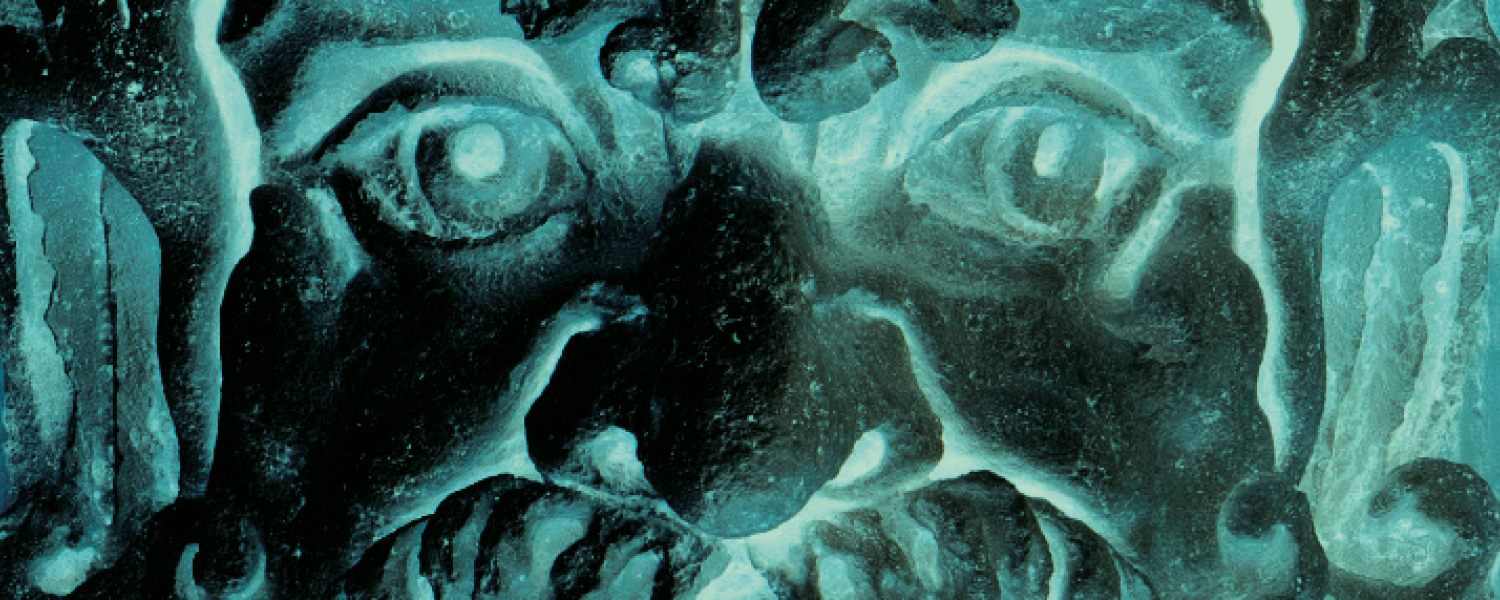
White Night
2024
28.11.2024
- Artists :
- Silva Agostini
- Haig Aivazian
- Bianca Bondi
- Janco Boy Bystron
- Caroline Cren
- Nicolas Daubanes
- Abdessamad El Montassir
- Arturo Franzino
- Claudia Jane Scroccaro
- Amalia Laurent
- Pierre-Yves Macé
- Clovis Maillet
- Christophe Moure
- Flor Paichard
- Jérôme Printemps Clément-Wilz
- Nicolas Sarzeaud
- Seynabou Sonko
- Ana Vaz
- Pierre Von-Ow
- Lise Wajeman
- Louisa Yousfi



